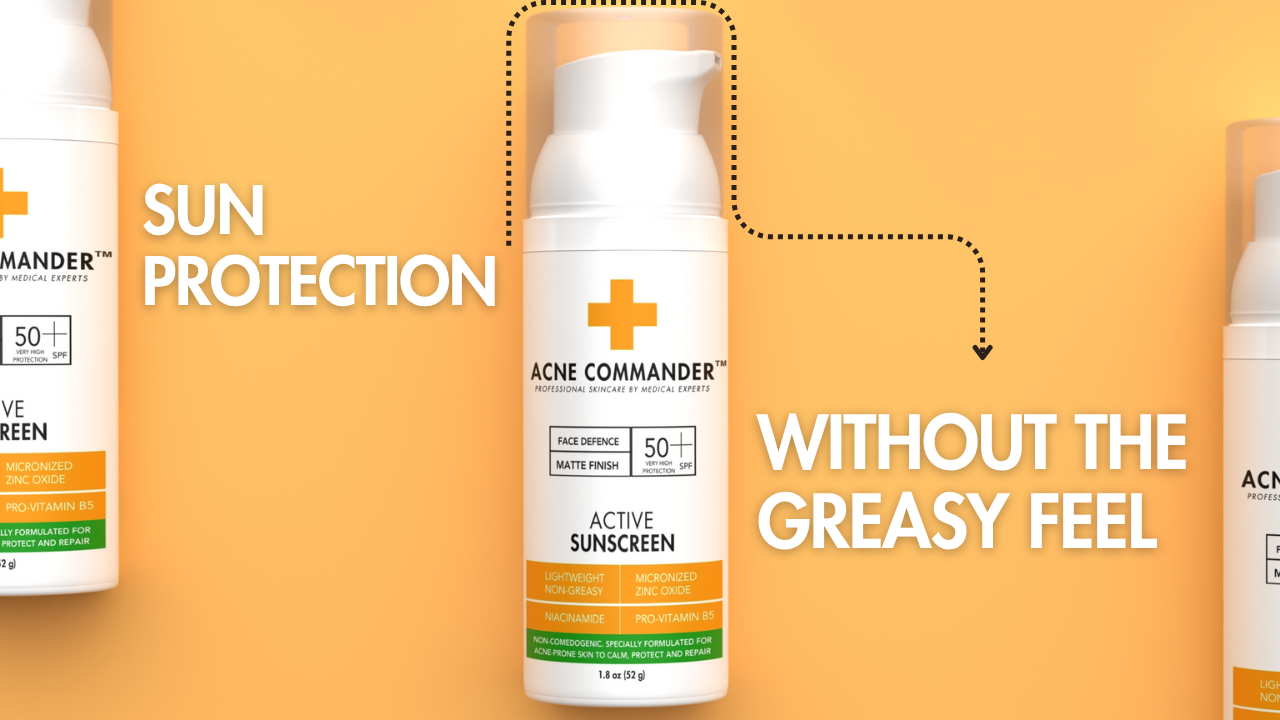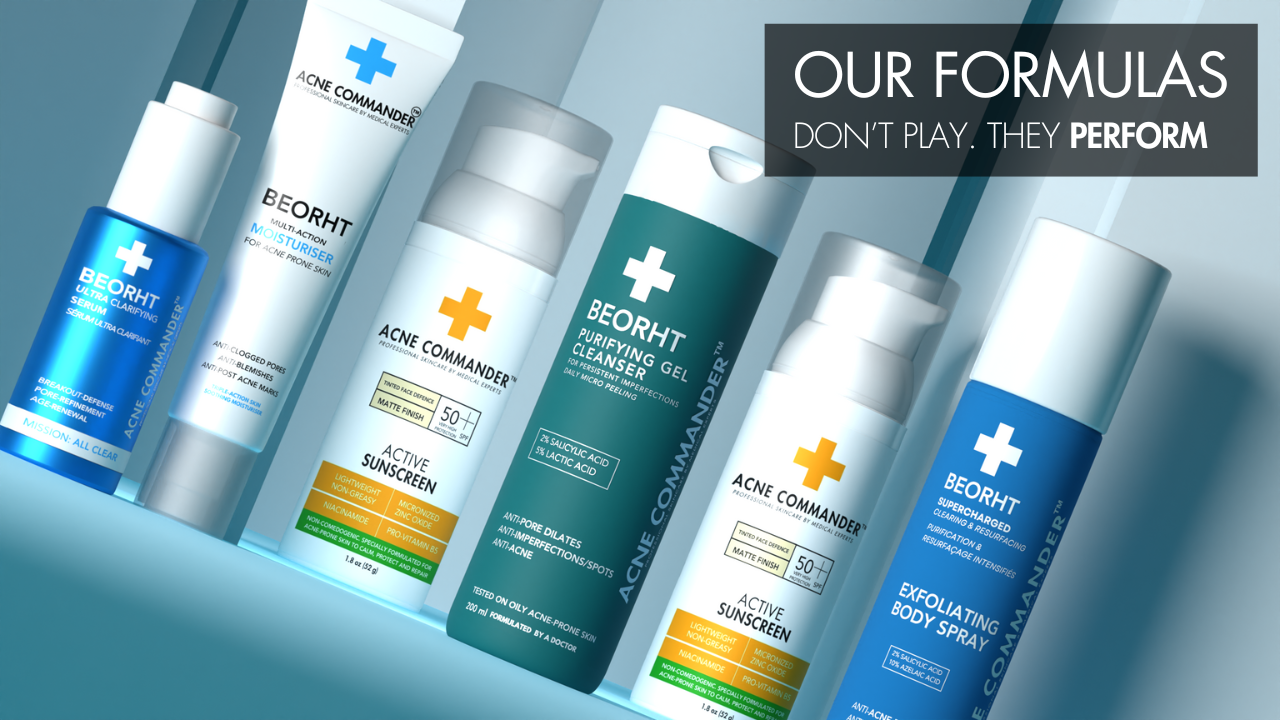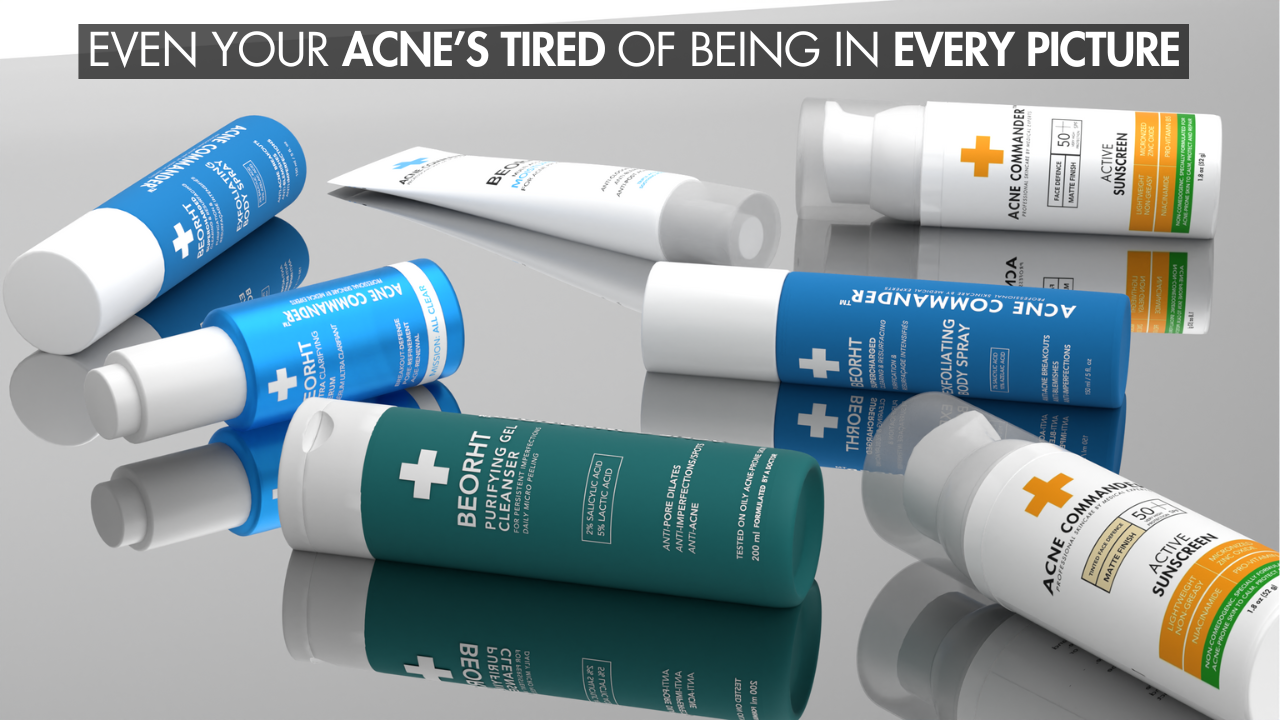Introduction
Salicylic Acid is one of the most popular and effective ingredients used to treat acne. As a beta hydroxy acid (BHA), it penetrates deep into the pores to exfoliate, clear blocked pores, and prevent breakouts. However, one of the common concerns when using Salicylic Acid-based cleansers is skin dryness. Salicylic Acid can be drying for the skin, especially when used in high concentrations or overused, as it can strip the skin of its natural oils.
So, how do you prevent skin dryness when using Salicylic Acid cleansers and still reap the acne-fighting benefits? In this article, we’ll explore effective strategies to keep your skin hydrated and healthy while using Salicylic Acid. We’ll also discuss how to incorporate this ingredient into your skincare routine without causing dryness, and why Acne Commander’s Beorht Purifying Gel Cleanser, which contains Salicylic Acid, is an ideal solution for acne treatment without compromising hydration.
Why Does Salicylic Acid Cause Dryness?
Salicylic Acid works by exfoliating the skin’s surface and inside the pores. While this can be great for preventing acne and promoting a smooth complexion, it can also lead to skin dryness for several reasons:
Exfoliation and Skin Barrier Disruption
Salicylic Acid exfoliates by breaking down the bonds that hold dead skin cells together. While exfoliation is great for removing buildup in the pores, it can also make the skin more vulnerable to environmental damage. Over-exfoliating or using too much Salicylic Acid can compromise the skin’s natural barrier, leading to dryness, irritation, and sensitivity.
Oil Stripping
Salicylic Acid works by dissolving the oil that can clog pores, but it may also remove essential oils from the skin’s surface. If the skin is stripped of too much oil, it can trigger the production of more oil to compensate, leading to imbalanced skin. This imbalance can result in areas of the skin becoming dry and flaky, even if you have oily skin.
Increased Sensitivity
Salicylic Acid can make the skin more sensitive, especially when used in higher concentrations or combined with other exfoliating agents. Sensitive skin is more prone to dryness, irritation, and redness, particularly when exposed to external factors like sun exposure or harsh weather.
Explore detailed information for Acne Commander's Beorht Purifying Gel Cleanser. Click Here
How to Prevent Skin Dryness When Using Salicylic Acid Cleansers
While Salicylic Acid can lead to skin dryness, there are several ways to protect your skin from this effect while still benefiting from the acne-fighting properties of the ingredient. Here are some tips for preventing skin dryness when using Salicylic Acid cleansers:
1. Start Slowly and Use Moderate Concentrations
If you’re new to Salicylic Acid or have sensitive skin, it’s important to start slowly. Using too much Salicylic Acid right away can overwhelm your skin and cause dryness or irritation.
-
Tip: Start with a cleanser containing 0.5% to 2% Salicylic Acid. These lower concentrations are effective for treating acne while being gentler on the skin.
-
Tip: Begin by using the Salicylic Acid cleanser 2-3 times per week and gradually increase the frequency as your skin builds tolerance.
2. Follow Up with a Hydrating Moisturizer
One of the best ways to prevent dryness when using Salicylic Acid cleansers is to always follow up with a moisturizer. After cleansing with Salicylic Acid, your skin may feel tight or dry. A good moisturizer helps to lock in moisture, prevent water loss, and restore the skin’s hydration balance.
-
Tip: Choose a non-comedogenic moisturizer that is oil-free but still hydrating. Look for ingredients like glycerin, hyaluronic acid, and ceramides, which help retain moisture without clogging pores.
3. Avoid Over-Exfoliating
While exfoliation is important for acne treatment, over-exfoliating can strip the skin of its natural oils and disrupt its barrier. Since Salicylic Acid is an exfoliant, it’s crucial not to overuse it, especially if you’re using other exfoliating products in your routine (like glycolic acid, retinol, or physical scrubs).
-
Tip: Use your Salicylic Acid cleanser no more than twice a day (morning and evening). If you’re using other exfoliants, space them out throughout the week to avoid over-exfoliation.
4. Use a Hydrating Toner After Cleansing
If your skin feels tight or dry after using a Salicylic Acid cleanser, a hydrating toner can help restore moisture and balance. Look for toners with soothing ingredients like Aloe Vera, Chamomile, or Rose Water. These ingredients calm the skin and add an extra layer of hydration.
-
Tip: Avoid toners that contain alcohol, as they can exacerbate dryness. Instead, opt for alcohol-free formulas that hydrate and refresh the skin.
5. Apply Sunscreen Daily
Salicylic Acid can make the skin more sensitive to the sun, which increases the risk of sunburn, pigmentation, and irritation. To protect your skin from these harmful effects, apply a broad-spectrum sunscreen with SPF 30 or higher every morning.
-
Tip: Look for a non-comedogenic sunscreen that won’t clog your pores. Choose one with physical sun blockers (like zinc oxide or titanium dioxide) if you have sensitive or acne-prone skin.
6. Choose a Gel Cleanser with Added Hydration
Not all Salicylic Acid cleansers are the same. Some can be more drying than others, especially if they contain harsh surfactants or have a strong concentration of the active ingredient. Look for a hydrating gel cleanser that combines Salicylic Acid with moisturizing and soothing ingredients, such as Sodium PCA, Glycerin, or Aloe Vera.
-
Tip: Choose a cleanser with a balanced formula that treats acne without over-drying the skin. Beorht Purifying Gel Cleanser is a great option, as it contains Salicylic Acid along with hydrating and soothing ingredients.
Beorht Purifying Gel Cleanser: A Great Option for Acne Treatment Without Dryness
Acne Commander’s Beorht Purifying Gel Cleanser is an excellent choice for treating acne while preventing skin dryness. Here’s why it works so well:
-
Salicylic Acid 2%: Salicylic Acid exfoliates the skin, clears clogged pores, and helps prevent acne breakouts while being gentle on the skin.
-
Lactic Acid 5%: Lactic Acid gently exfoliates the surface of the skin, improving texture and fading acne scars over time.
-
Non-Comedogenic Formula: Beorht Purifying Gel Cleanser is designed to be non-comedogenic, meaning it won’t clog pores or contribute to acne.
-
Soothing Plant Extracts: Scutellaria Baicalensis Root Extract and Sophora Angustifolia Root Extract help reduce inflammation and calm irritated skin, which is common with acne.
-
Hydrating Ingredients: Sodium PCA and Butylene Glycol help maintain skin hydration, preventing dryness and irritation caused by acne treatments.
Beorht Purifying Gel Cleanser is formulated to be both effective and gentle, making it an ideal solution for acne-prone skin without compromising hydration.
FAQ
Q1: How does Salicylic Acid cause dryness?
Salicylic Acid exfoliates the skin by dissolving the bonds between dead skin cells. While this helps clear clogged pores, it can also strip the skin of its natural oils, leading to dryness if overused.
Q2: Can I use a Salicylic Acid cleanser if I have dry skin?
Yes, but use it sparingly. Start by using a lower concentration (0.5%-2%) and cleanse your skin once a day to prevent over-drying. Follow up with a moisturizing product.
Q3: How can I prevent dryness when using Salicylic Acid?
Use a moisturizer after cleansing, avoid over-exfoliating, and ensure you’re using a gentle, hydrating formula. Sunscreen is also essential to protect your skin from sun damage.
Q4: How often should I use a Salicylic Acid cleanser?
Start by using it 2-3 times a week and gradually increase the frequency. Overuse can lead to dryness or irritation, so listen to your skin’s needs.
Q5: Does Beorht Purifying Gel Cleanser help with acne and dryness?
Yes, Beorht Purifying Gel Cleanser combines Salicylic Acid with Lactic Acid and hydrating ingredients, making it effective for acne treatment without causing excessive dryness.
Q6: Can I use other acne treatments with Salicylic Acid?
Yes, but be cautious not to over-exfoliate. If using Benzoyl Peroxide or Retinol alongside Salicylic Acid, apply them on alternate days to avoid irritation.
Q7: Can Salicylic Acid make my skin more sensitive?
Yes, Salicylic Acid can increase your skin’s sensitivity to the sun and environmental factors. Always apply sunscreen and avoid excessive exposure to the sun.
Q8: How long does it take for Salicylic Acid to show results?
It may take 2-4 weeks to see noticeable results in terms of reduced acne and smoother skin texture. Consistent use is key for long-term improvement.
Conclusion
Salicylic Acid is an effective and powerful acne treatment, but it can cause dryness if not used properly. To prevent skin dryness when using Salicylic Acid cleansers, it’s important to start with lower concentrations, use the cleanser sparingly, and follow up with hydrating moisturizers. Acne Commander’s Beorht Purifying Gel Cleanser is a great option, offering Salicylic Acid and Lactic Acid to treat acne while keeping the skin hydrated and balanced.
Call to Action:
Ready to clear your acne without the dryness? Try Acne Commander’s Beorht Purifying Gel Cleanser today and experience the perfect balance between effective acne treatment and hydration!






